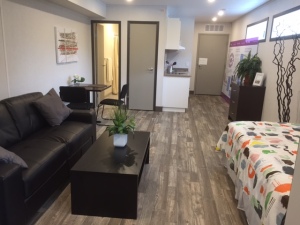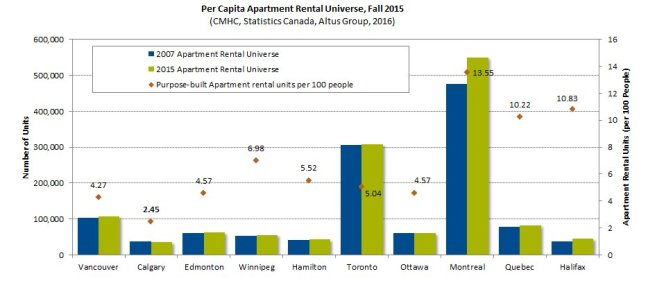Housing Policy in 2018 Vancouver Civic Election: A Candidates’ Panel
Hosted by the UBC Sauder School of Business on September 12, 2018 at the Fairmont Pacific Hotel | Total run time: 1:57:09
I definitely recommend watching this video at the link above – it is a recording of what may be (though I hope not) the only candidate forum of the 2018 civic campaign that focuses exclusively on housing policy. I’ve noted the times that each of the 17 questions was asked to make it easier to find the answers you’re most interested in over the 2+ hours. Many good questions were asked and watching this may save you the effort of repeating these questions to candidates yourself, or allow you to develop other questions that build on these ones. The written questions below are either verbatim or close paraphrases of what was said live.
Participating candidates
Mayor: Hector Bremner (Yes Vancouver), David Chen (ProVancouver), Ken Sim (NPA) Kennedy Stewart (ind.) Shauna Sylvester (ind.)
Council: Christine Boyle (OneCity), Diego Cardona (Vision), Pete Fry (Greens) Jean Swanson (COPE)
0:00:03: Introduction by UBC Sauder School of Business professor Tom Davidoff, including thank yous to sponsors, staff, and volunteers who made the event possible. Introduction of moderators Nadia Stewart of Global BC TV and Ian Bushfield of the Cambie Report podcast.
0:3:05: Tom Davidoff explains the format of event and time allowed for each candidate response (90 seconds). Note: The first question went to Hector Bremner. After that, the opportunity to go first went to the candidate seated one person to the right of the last person to go first.
0:4:40 First question to candidates is from Tom Davidoff. He says it’s a “Kobayashi Maru” (Star Trek) or nightmare type of scenario: You have an an extremely under-used, long-time vacant piece of land in an RS zone. A developer proposes to build 12 x 1,250 sqft 3-bdm, 2-bath townhomes. The developer will also either provide 3 of the units to the city to be used as affordable rental or $3 million in community amenity contributions for the city to use as it wishes. If you vote no, the developer will default to RS and build two large single-family homes. The planning dept. says it is a good project. But the neighbours and residents’ association think it’s terrible and are very angry. Candidates must answer yes or no only. Hector Bremner starts.
0:08:54: Ian Bushfield explains the format of the rest of the evening, which will last about 80 minutes. He and Nadia will ask each of the candidates nine questions that they each have 90 seconds to answer. If they don’t get through all the nine questions at ninety seconds per candidate, they will start lightning rounds where candidates can give one-word answers. The order of the questions is random.
0:9:33: Nadia Stewart asks Q1, which is from Alex Hemingway of the Canadian Centre for Policy Alternatives. How many homes will you create and what kind? Answers start with Kennedy Stewart.
0:18:42: Ian Bushfield asks Q2: What changes will you make in your first 90 days in office to clear the backlog in the planning office? Answers start with David Chen.
0:31:10 Nadia Stewart asks Q3: The Westside seems to be a target for rezoning these days. However, previous discussions of rezoning have often been met with stiff opposition. What is the role of community consultations with regards to what gets built? Answers start with Christine Boyle.
0:44:24: Ian Bushfield asks Q4: Everyone knows that Canada’s population is aging and that we have not built neighbourhoods to house our diverse seniors and our diverse residents. How do we move forward and house seniors in Vancouver? Answers begin with Shauna Sylvester.
0:57:42: Nadia Stewart asks Q5: Community amenity contributions (CACs) have become a bone of contention between developers and the city. Should CACs be negotiated or set at a predetermined rate? Answers start with Ken Sim.
— Lightning round —
1:09:57: Ian Bushfield asks Q6: Do you own, rent, or live in a coop? Answers start with Diego Cardona.
1:10:30: Nadia Stewart asks Q7: Would you introduce and/or advocate that the province introduce a land value tax? Answers start with Pete Fry.
1:11:39: Ian Bushfield asks Q8: Would you raise the empty homes tax? Answers start with Jean Swanson.
1:12:35: Nadia Stewart asks Q9: Should incumbent residents have a veto over rezoning applications? Answers start with Hector Bremner.
1:13:18 Ian Bushfield asks Q10: Will you develop purpose-built rentals on city-owned land? Answers start with Kennedy Stewart.
1:12:59 Nadia Stewart asks Q11: Are you in favour of a progressive property tax or mansion tax? Answers start with David Chen.
1:14:36: Ian Bushfield asks Q12: Would you have voted for the current council’s Making Room proposal? Answers start with Christine Boyle.
1:15:58: Tom Davidoff explains that the next part of the evening will be questions from audience. If you are just here for the schmoozing, you can go in the other room and do that now. There will be another 20 to 30 minutes of questions with one-minute time limits for answering. Questions came from online and audience.
1:16:46: Tom Davidoff asks Q13: Hypothetically, what would happen if the city insisted on getting 30% more in CACS on each development than it’s currently charging? How many fewer units would have been built and what would that have done to prices of condos and apartment rents? Answers start with Diego Cardona.
1:27:21: Tom Davidoff asks Q14: How do we get more rental housing built and should we? Or is it okay if all the building we’re doing is condos? Answers start with Pete Fry.
1:34:51: Tom Davidoff asks Q15: What is the role of foreign investment in Vancouver’s housing market these days – big deal, not a big deal? Also, what should be the role of foreign money in the city’s housing market – is there anything good about it, or is it all bad? Answers start with Jean Swanson.
1:44:08: Tom Davidoff asks Q16: What should we do about homelessness in Vancouver? Answers start with Hector Bremner.
1:54:50: Tom Davidoff asks Q17 (final question): BC’s rent control regulation is allowing 2% above CPI in 2019, for a total maximum rent increase this year of 4.5%. What number above CPI (or below) do you think should be allowed? Say a number. Answers start with Kennedy Stewart.
The end.


























